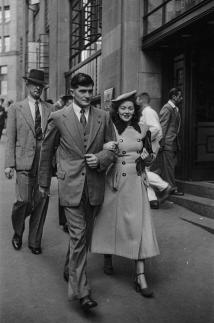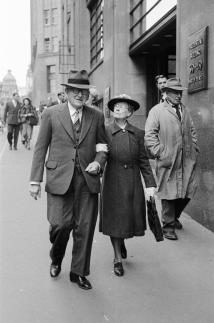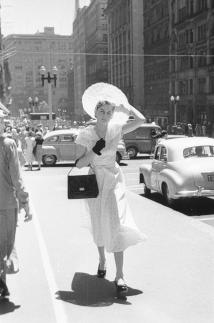Friday Degustation: tasty morsels…
#knowmyname

It turns out that just 25% of the collection of the National Gallery of Australia is by female artists. Under new director Nick Mitzevitch, the NGA is launching #knowmyname, an effort to redress the gender imbalance. Announced this week, the NGA will stage a major exhibition of Australian women artists in May 2020 and feature work by female artists in the collection in the 20th century Australian art gallery from May to October. [>] “We want to do more than have a conversation about equality, we want to take action and address the significant imbalance before us… The value of women artists in this country needs to be elevated as we are a thriving, diverse culture that should be celebrated,” said Mitzevich The Gallery is also collaborating with independent researchers The Countess Report in developing guidelines for arts organisations to achieve equality, building on the work of the National Association for the Visual Arts, the Australia Council and the Sheila Foundation for Women in Visual Art.”

And speaking of the Sheila Foundation, Clarissa Sebag-Montefiore [yes, that Sebag-Montefiore family!] reports for the Guardian UK on the launch of John Cruther‘s latest philanthropic venture [>] “Put simply, female artists – in the past as today – are grossly underrepresented. “What it means is we have a warped or limited view of our history. By having so few women you miss out on a big part of the story,” says Cruthers. This month, Cruthers, 65, is hoping to change that with the launch of Sheila: A Foundation for Women in Visual Art – a new incarnation of the private Cruthers Art Foundation, which was founded in 2007 by his parents, Sir James and Lady (Sheila) Cruthers. The public foundation (John Cruthers is chair) launched on Tuesday at the University of Western Australia and will support female artists by purchasing and commissioning works; by providing scholarships for female art historians and curators; and by hosting an annual symposium on female Australian art. Sheila joins a larger global campaign for female recognition across visual arts.”
On the streets of your town…
Street photography was once a thriving business in Australia’s cities. Couples, families, the elderly, groups of friends out on the town, were subjects for the roving photographers’ cameras. The deal was simple – come to the photographer’s shop and buy a print, or not. The choice was yours. While many did buy prints and copies remain in family photo albums, many more didn’t and when the photographic companies went out of business, the negatives were lost. The Museum of Sydney put a call out for street photographs for a recent exhibition which prompted the donation of the entire surviving archive of Ikon Studio [>] “Ikon Studio operated from the late 1940s to the late 1950s, selling prints from Her Majesty’s Arcade on Market Street. Each strip of 35mm film is a complete sequence of images taken, not just those purchased by the public. All of the 5000 Ikon Studio photos were shot between May and December 1950 in Martin Place, Sydney, and probably represent no more than ten days – or part days – of work. They were taken from a licenced street photography stand located outside the Prudential Building between Castlereagh and Elizabeth streets, and the backgrounds of the images offer glimpses of this bustling city location either looking up Martin Place towards Macquarie Street or down towards George Street. The images offers us a unique insight into how the street photographers worked as they repositioned themselves in response to the flow of pedestrians, and reveal the public’s varying responses to being photographed.”
Election come down @ MONA
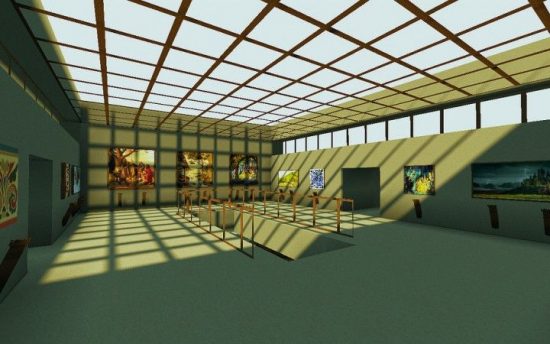
You no doubt recall [>] our post a few weeks back about steps to launch Hobart as the country’s culture capital. While there have been some valiant attempts to establish a few attractions beyond David Walsh’s Museum of Old & New Art, the giant metal behemoth up river is still the biggest show in town. But not as big as it might have been. The post election come down is particularly hard for Walsh who was hoping a Labor victory would secure the museum some Federal funding. According to the Australian Financial Review, [>] “Labor had promised public funding for new facilities at MONA, including a convention centre, theatre, library, auditorium and playgrounds, recognition of its $135 million contribution to the Tasmanian economy. “We don’t know what it means yet,” Mr Walsh told AFR Weekend. “I will only build something that is Mona-level, there won’t be any compromise, so there may be a long delay. It now might not happen or, perhaps, we might find another method to bridge the gap in our funding. In the meantime, Mona as an art museum and tourist facility will keep developing.IIn 2017-18, MONA contributed $165 million to Australia’s GDP. It is set to open a new wing as part of its Dark Mofo festival next month.”
Farewell Barney Rubble
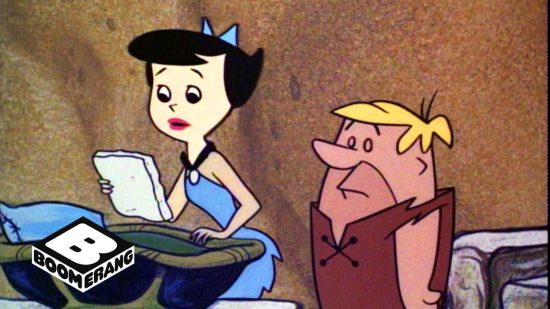
The triumphalism following the Coalition’s unexpected win has been a little hard to stomach, especially as it was only marginally better than the Coalition’s result in 2016. However, a few bits of good news could be found in the Cabinet reshuffle announced last Sunday. As the ABC reported [>] “Mr Morrison announced Senator Arthur Sinodinos will become Australia’s next ambassador to the United States, replacing Joe Hockey when his term ends. He will also recommend Mitch Fifield become Australia’s ambassador to the United Nations…”
That’s right, one of the most forgettable arts ministers in living memory got the shove to make way for more hard right parliamentarians in the senate. Like incompetent British generals who led their troops into disaster, Fifield gets a promotion and raise, and is shipped off to New York into a purely ceremonial role. We will miss you Barney Rubble.

But wait, if Fifield is out, who is the next minister for communications and the yarts? Paul Fletcher MP has been given the role. As Mumbrella helpfully summarised [>] “The nation’s media industry has overwhelmingly welcomed Paul Fletcher as the the new communications minister… Fletcher served as director of corporate and regulatory affairs at Optus between 2000 and 2007 after four years as a staffer with Howard-era minister of communications, Richard Alston. In the new cabinet line up he will also be minister for the arts…”
As you may recall, Alston was minster for communications and the arts back in the Howard glory years of the waterfront dispute, defunding universities, and the children overboard scandal. Well, it seems as a former staffer Fletcher is as big a deadshit as his mentor. Fletcher has a shocking record in his senate votes, [>] everything from voting to take more water out of the Murray Darling for farming, for meaningless changes to a ‘citizenship test’, for the removal of weekend penalty rates, and for reducing corporate tax rates. Ok, he did vote for same sex marriage, but it’s a pretty woeful record when it comes to social justice. It’ll make him another perfect do nothing Liberal arts minister. Welcome!
Expanding the Canon
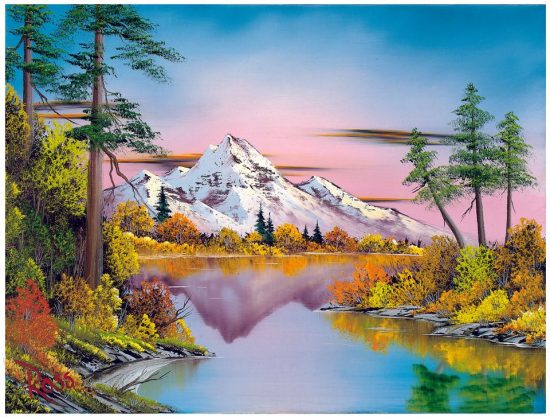
Although we’ve written previously on [>] the majestic talent that was Bob Ross, it always comes as a surprise to discover that the bouffanted artist has a dedicated, serious art world following elsewhere. A new show in the US New Age, New Age: Strategies for Survival at the DePaul Art Museum in Chicago re-evaluates Ross as a serious artist. [>] ‘Four oil landscapes created by Ross for his Joy of PaintingTV show are exhibited alongside works by Rashid Johnson, Tony Oursler, Mai-Thu Perret, Robert Pruitt and others. “Put aside your prejudices of Bob Ross and think of him as a true artist,” says the museum’s director and curator Julie Rodrigues Widholm, who likens the painter’s reputation to Frida Kahlo’s. “I’ve been interested in his [cultural] ubiquity yet distance from the art world.” Rodrigues Widholm’s curatorial provocation takes aim at art museums and the market to confront biases of taste, class and the practice of art therapy. “It’s what I might consider expanding the canon,” she says.
“I’ll be at home if anyone needs me…”
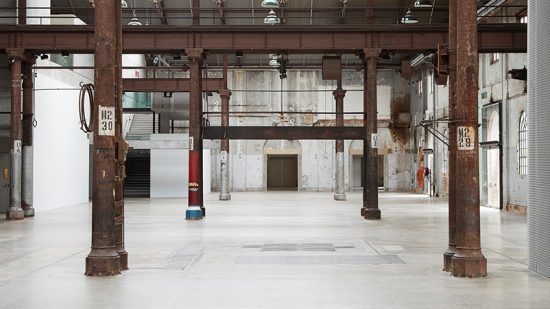
Last Friday it was announced that, after a long and extensive international search, Blair French is the new director of Carriageworks. As per the media release the Chairman of Carriageworks Sam Mostyn said “We have no doubt Blair is the right person to lead the next era of Carriageworks. Blair has had a distinguished career across the arts sector, having held leadership positions at four of Sydney’s key contemporary arts organisations, playing major roles in the maturing of their business operations, the extension of their national and international reputations through innovative programming and extensive relationship building, and their development of audiences across a wide spectrum of artistic practices. He is passionate about the capacity of creative practices to change the lives of individuals and the vitality of communities.”
What’s even better is that for French, who previously worked at the Museum of Contemporary Art at Circular Quay, and at Artspace in Woolloomooloo, Carriageworks is literally just down the street from his house. [>] “Living close to Carriageworks, it is part of my everyday life, feeds my imagination and acts as a crucial hub in my experience of creative and socially engaged Sydney communities. I am thrilled to have the opportunity to lead Carriageworks into the future. I look forward to beginning work with the wonderful team there, the many partners and friends of Carriageworks, its audiences and the artists whose ideas and work it strives to support.”
Robyn Sweeney’s ‘Dwell’
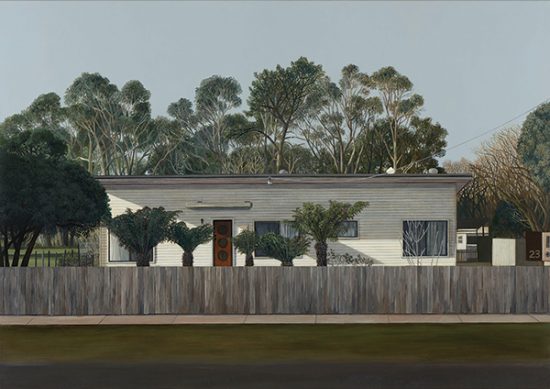
One of our favourite Australian artists Robyn Sweeney has just opened Dwell at Tweed Regional Gallery. The painter of Australian landscapes, Sweeney’s work captures the formal qualities of suburban street architecture, from classic 40s and 50s fibro, to 60s red brick, to 70s dark timbers and 80s and beyond glass and steel. Writing on her work Sweeney explains that [>] “By painting houses and buildings I have been able to combine an expression of place with philosophical and poetic ideas. My paintings depict elements of a cultural landscape; one that combines properties created by nature and those intentionally altered or created by people.Residencies, travelling to new places and revisiting past landscapes have also become extremely important elements of my work. While travelling through the familiar and unfamiliar Australian rural and suburban landscape, certain elements of place resonate an unexplainable reaction within me – something ignites deep within memory. The landscape is somehow opened up by the search itself and my response can reach beyond its visual appearance.”
Assorted Links
Pixie O’Harris paintings, missing for 60 years, [>] mysteriously reappear at NSW hospital
Sotheby’s to hold [>] the first major Aboriginal art sale in the US in November
Billionaire philanthropist Judith Neilson [>] showcases White Rabbit Gallery art collection at NGV
The “Handmaid’s Tale” costume isn’t the women’s rights icon we need [>] The Rise of the Handmaid Habit as a Visual Icon
The gradual eclipse of the Old Masters and Impressionist worlds is a cautionary tale: [>] New thinking is needed as the gloss drips off the art market
New York City’s Whitney Museum is facing fierce criticism over one of its board members, but only one invited artist, Michael Rakowitz, withdrew from the museum’s Biennial in protest [>] The Whitney Biennial in an Age of Anxiety
Massive storage facilities can hold collections and other valuables for decades [>] The ‘Secret Museums’ Hiding Some of the World’s Greatest Art, Tax-Free
Remember that Da Vinci masterpiece you bought? Turns out it was a fake [>] Louvre casts doubts on $450 million ‘Leonardo’ authenticity of ‘Salvator Mundi’
[>] 2,000-year-old marble head of god Dionysus discovered under Rome
[>] Brutalist Beaver Constructs Paul Rudolph-Inspired Dam
And finally…
“We live in an environment where there are moving images constantly around us. But in 1897, this was startling and new and completely revolutionary. It was a different way of looking at the world.” In 1939, MoMA acquired a treasure of thirty-six reels of 68mm nitrate prints and negatives made in cinema’s first years. Everything that survived of the Biograph film company lives on those reels, including a rare bit of moving image footage of Queen Victoria. For the latest edition of How to See, we visited MoMA’s film archives in Hamlin, Pennsylvania to learn more about the incredible quality and clarity of this newly discovered nineteenth-century movie, and the efforts archivists make to preserve such irreplaceable snapshots of history. Curator Dave Kehr joins the discussion to help us look at the early film with the same awe-inspired, expanded view of the world of its first audiences…”
